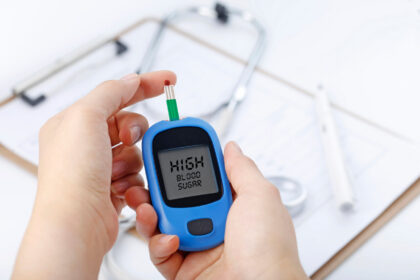Diabetes management comes with its challenges, but one of the most effective ways to manage it is through regular exercise. Physical activity not only helps to control blood sugar levels but also offers a myriad of other health benefits.
For type 1 diabetes (T1D), we have evidence that exercise can reduce diabetes-associated complicationsTo take advantage of these advantages, however, those with both T2D and T1D must get beyond physiological and behavioral obstacles to exercise. “National Library of Medicine”
In this article, we’ll explore three types of exercise that are essential for effective diabetes management, along with the specific benefits they provide.
Moderate-Intensity Aerobic Exercise for Diabetics
Managing Diabetes is challenging and one of the effective ways for it is Moderate-intensity aerobic exercise is a crucial component of diabetes management. This type of exercise involves activities that elevate your heart rate and breathing but still allow you to carry on a conversation.
Examples include:
- Brisk walking
- Cycling
- Swimming
- Dancing
Engaging in moderate-intensity aerobic exercise helps improve cardiovascular health, increase insulin sensitivity, and lower blood sugar levels. It’s recommended that individuals with diabetes management aim for at least 150 minutes of moderate-intensity aerobic exercise per week, spread out over several days.
Always remember to consult your healthcare provider before starting any new exercise regimen, especially if you have diabetes or other underlying health conditions.
Benefits of Moderate-Intensity Aerobic Exercise for Diabetics
Improved insulin sensitivity
Regular aerobic exercise helps your body use insulin more effectively, which can lead to better blood sugar control.
Lowered blood sugar levels
Aerobic exercise helps to reduce blood sugar levels by increasing glucose uptake into your muscles.
Cardiovascular health
Aerobic exercise strengthens your heart and improves circulation, reducing your risk of heart disease, a common complication of diabetes.
Weight management
Weight loss is one of the fundamental parts of diabetes. Aerobic exercise can aid in weight loss or maintenance, which is important for diabetes management.
Strength Training for Blood Sugar Control
Strength training, also known as resistance or weight training, involves working your muscles against resistance to build strength and endurance. While aerobic exercise focuses on cardiovascular health, strength training plays a crucial role in managing diabetes by improving muscle mass, which in turn helps regulate blood sugar levels.
Benefits of Strength Training for Diabetics Management
- Increased muscle mass: Strength training helps to build and maintain muscle mass, which can enhance insulin sensitivity and glucose uptake by muscles.
- Improved blood sugar control: Engaging in regular strength training can lead to better blood sugar control by increasing insulin sensitivity and reducing insulin resistance.
- Enhanced metabolism: Building lean muscle through strength training can boost your metabolism, helping you burn more calories throughout the day.
- Bone health: Strength training helps to increase bone density, reducing the risk of osteoporosis, another common complication of Diabetes Management
Creating a Safe and Effective Exercise Plan for Type 1 Diabetes
For individuals with type 1 diabetes, managing blood sugar levels during exercise can be challenging due to fluctuations in insulin levels. However, with careful planning and monitoring, it’s possible to engage in physical activity safely and effectively.
Tips for Creating a Safe and Effective Exercise Plan for Type 1 Diabetes
- Monitor blood sugar levels: Check your blood sugar before, during, and after exercise to ensure it stays within a safe range.
- Adjust insulin dosage: Depending on your blood sugar levels and the intensity of your workout, you may need to adjust your insulin dosage or carbohydrate intake.
- Stay hydrated: Drink plenty of water before, during, and after exercise to stay hydrated and prevent dehydration.
- Carry fast-acting carbohydrates: Keep glucose tablets or other sources of fast-acting carbohydrates on hand in case your blood sugar drops during exercise.
- Listen to your body: Pay attention to how you feel during exercise and adjust your intensity or duration accordingly. If you experience dizziness, weakness, or other symptoms of low blood sugar, stop exercising and treat it immediately.
Best Exercises to Improve Insulin Sensitivity in Diabetics
The best exercises to improve insulin sensitivity in individuals with diabetes include:
- Aerobic Exercise: Activities like brisk walking, jogging, cycling, or swimming for at least 150 minutes per week.
- High-Intensity Interval Training (HIIT): Alternating short bursts of intense exercise with brief recovery periods.
- Strength Training: Incorporating weightlifting or bodyweight exercises two to three times per week.
- Flexibility and Balance Exercises: Yoga, tai chi, or Pilates to improve overall physical function.
- Combined Exercise: Combining different types of exercises for a well-rounded routine.
Conclusion
Regular exercise is essential for effective diabetes management, offering a wide range of benefits from improved blood sugar control to enhanced cardiovascular health. By incorporating moderate-intensity aerobic exercise, strength training, and careful planning for types 1& 2 diabetes, individuals can take control of their health and live well with diabetes management. Remember to consult with your healthcare provider before starting any new exercise regimen, especially if you have diabetes or other underlying health conditions. With dedication and commitment, you can reap the rewards of a healthy and active lifestyle!
FAQs
What are the best exercises for Diabetes management ?
The best exercises include moderate-intensity aerobic exercise, strength training, and low-impact activities like yoga.
How often should I exercise to manage my diabetes effectively?
Aim for at least 150 minutes of moderate-intensity aerobic exercise per week, along with two to three sessions of strength training for a Diabetes management.
Can exercise help with weight management for diabetes?
Yes, regular exercise aids in weight management by burning calories, boosting metabolism, and building muscle mass.
How can I prevent low blood sugar during exercise?
Monitor blood sugar levels, eat a small carbohydrate snack before exercising, and carry fast-acting carbohydrates for emergencies.
Is it safe for individuals with type 1 diabetes to exercise?
Yes, but careful planning and monitoring are essential. Work closely with your healthcare provider to create a personalized exercise plan.





